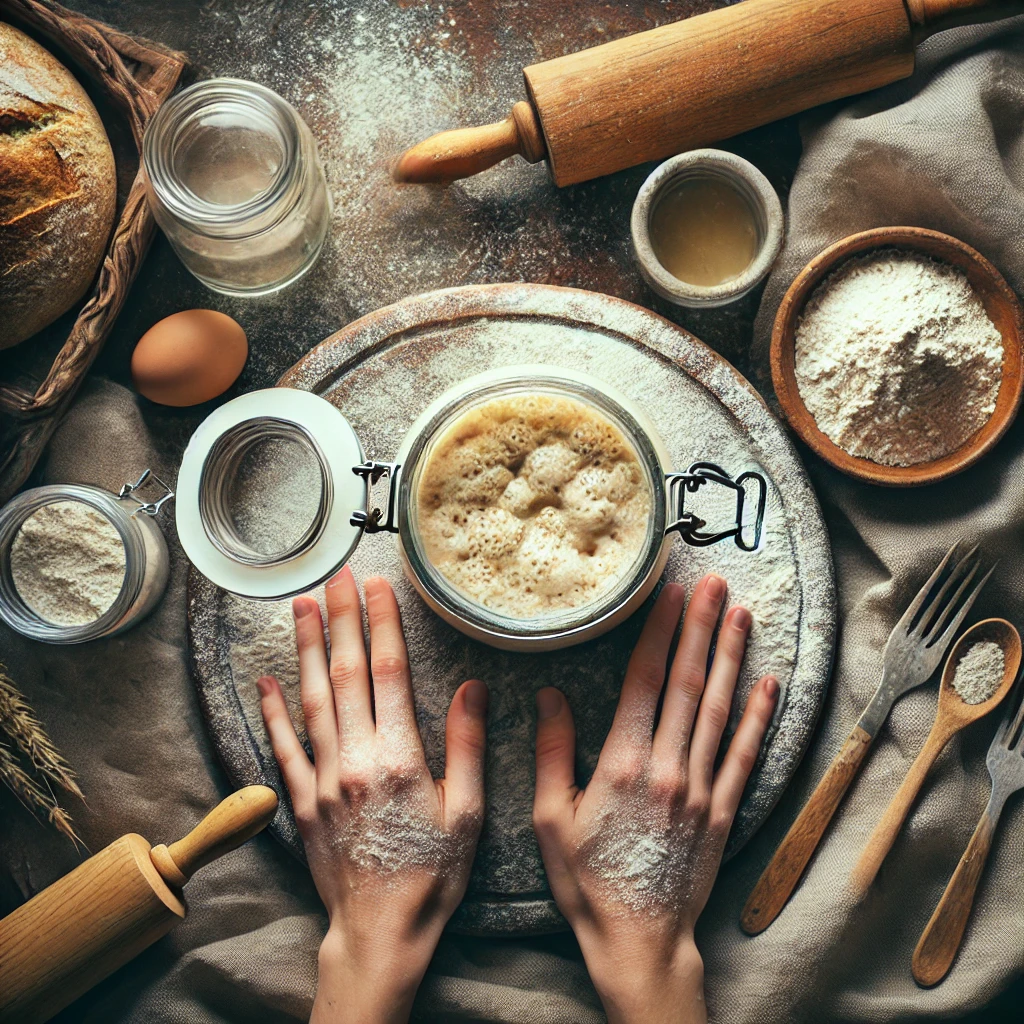Sourdough fermentation is a delicate balance—too short, and you miss out on deep flavors and that signature airy crumb; too long, and you risk a collapsed, overly acidic loaf. As I embark on baking my 5th loaf in this 1,000-loaf journey, I’m taking a deep dive into what’s really happening beneath the surface: the yeast and bacteria interactions, the changing pH, the acids at play, and how all of this affects dough structure.
The Yeast and Bacteria Working Behind the Scenes
At the heart of every sourdough starter is a bustling community of wild yeast and lactic acid bacteria (LAB). The yeast—typically strains like Saccharomyces cerevisiae or Candida milleri—are responsible for producing the carbon dioxide that leavens the dough. These wild yeasts thrive in the slightly acidic environment of a mature starter, feeding on the sugars present in flour and converting them into gas and ethanol.
But yeast alone doesn’t define sourdough’s complexity. LAB—like Lactobacillus sanfranciscensis, named after the city that made sourdough famous—play an equally crucial role. These bacteria produce lactic and acetic acids, which contribute to sourdough’s distinct tang. Lactic acid provides a mild, yogurt-like sourness, while acetic acid (produced in lower-hydration, longer-fermented doughs) gives more of a sharp vinegar note. Finding the right balance between these acids can make or break a loaf’s flavor profile.
With this 5th bake, I wanted to adjust my fermentation time to see how a slightly longer bulk rise would impact the balance of yeast and bacteria. Would extending fermentation enhance the flavor, or would I end up with a dough that was too slack to hold shape?
The Science of pH and Acidity in Sourdough
As fermentation progresses, the pH of the dough steadily drops. A healthy sourdough starter typically has a pH between 3.5 and 4.5, creating an acidic environment that supports beneficial microbes while inhibiting unwanted ones. But how does this impact the dough structure?
The acidity affects gluten—the protein network responsible for giving bread its strength and chew. If the pH drops too low, the gluten structure can begin to break down, resulting in a dough that’s too weak to hold its shape. This is why over-fermented doughs often spread out instead of springing up in the oven. On the other hand, if the pH remains too high (due to insufficient fermentation), the dough may lack extensibility, making shaping difficult and leading to dense bread.
For this loaf, I let my dough ferment an hour longer than usual, keeping an eye on how the texture evolved. I also noted changes in smell—was it pleasantly tangy or veering into sharp, overripe territory? By tuning into these cues, I could gauge when to move from bulk fermentation to shaping.
Dough Structure: The Role of Time and Acids
One of the biggest risks of extended fermentation is the breakdown of dough structure. The acids produced by bacteria weaken gluten over time, which is why sourdough that ferments too long becomes sticky and unworkable. However, a well-managed fermentation can actually enhance dough elasticity, making it easier to handle and shape.
For this loaf, I incorporated a few extra stretch-and-folds to strengthen the dough before shaping. I also paid close attention to fermentation bubbles—small and evenly distributed gas pockets indicate well-developed gluten, while large, irregular bubbles can suggest an overly acidic environment that’s starting to degrade structure.
When I shaped the dough, it felt looser than my previous bakes, but not unworkable. I could tell it had developed more acidity than usual, which meant I might see an even more pronounced tang in the final loaf. Would this be a good thing? I was about to find out.

The Final Bake and What’s Next
After a cold proof in the fridge overnight, I baked my 5th loaf in a preheated Dutch oven. The result? A crust that had a deep, caramelized color and a noticeable tang in every bite. The crumb was more open than my first few loaves, though I noticed some areas where the structure had weakened. The extended fermentation had enhanced flavor, but I may have pushed it slightly too far, leading to some spreading in the oven.
For loaf #6, I’ll experiment with adjusting my fermentation time again, perhaps incorporating a slightly lower hydration or a shorter bulk ferment to see if I can fine-tune the balance between structure and flavor.
One thing is clear: fermentation is everything in sourdough, and the learning never stops.
